Kerri Chandler is an innovator. The legendary DJ and producer, who is looking at 30 years of house music in his rearview, is an out-of-the-box thinker who doesn’t see limitations, just new frontiers.
Case in point, his latest album, the 24-song Spaces and Places — his first since 2008’s Computer Games. Space and Places was not created in Chandler’s elaborate home studio in New Jersey — which is on par with any commercial studio, and leaves quite a few of those marquee locations in its dust. Instead, over the course of two years, Chandler traveled around the globe, recording the songs for Space and Places at clubs in various cities.
Printworks and Ministry of Sound in London, The Warehouse Project in Manchester, Rex in Paris, Plano B in Porto, Sub Club in Glasgow, Halcyon in San Francisco, Output in Brooklyn — it’s all just a smattering of the clubs that Chandler took over for Spaces and Places. The producer, 53, set up a mobile studio in the middle of each of these clubs when they were empty, tuning each song to the actual venue. The result is a wholly unique collection of house music that gives an aural snapshot of the iconic clubs.
Zooming in with Billboard from a hotel room in Paris on one of his endless DJ dates, the always affable Chandler delves deep into his past to uncover his present.
1. Where are you at the moment?
Where I am mentally or where I am actually today? Both? I’m in Paris. I play Badaboum tomorrow, one of my favorite places. It’s sold out, so I’m happy. I just left Lisbon. Same thing, sold out. I guess people want to get out after the pandemic, and I’m happy they want to see me. That’s a blessing.
Where I am mentally is I have this album out and it’s all been zooming by so fast. The vinyl is coming October 14, but the digital releases is out. It came out on my birthday, September 28. I gave that to myself as a birthday present.
2. What’s the first album or piece of music you bought for yourself and what was the medium?
I have to really think about this. It was probably when my dad first took me to a record store. I don’t remember what it was, but there were a lot of 45s, a couple of dollars here, a couple of dollars there — run home and put the little spindle on.
I think one of my first ones — and this is probably why I love this record so much, is John Coltrane My Favorite Things. That’s my benchmark. And when I could get another record, my Bob James one. That has got to be my first record that I really fell in love with and I had to have it, and I still have it. I had Bob James’ Sign of the Times, so that was a blessing.
3. What did your parents do for a living when you were a kid and what do they think of what you do for a living now? With your father being a DJ, your situation is a little different from most DJs.
My dad was a DJ. My mom was a stay-at-home mom. My mom wanted me to stay far away from DJing. She didn’t like the whole lifestyle, the party scene, any of that stuff. My dad was like the Ibiza DJ before there was an Ibiza DJ. If my mother could have it her way, she wanted me to be a conductor. She got the next best thing, I’m a producer. But she’s proud.
My father passed away. He got hit by a truck back in 2017. He went to the grocery store to grab a few things, some milk and some popsicles. He just wanted to have a little walk, and that’s what happened. He crossed the street, and a truck came running around the corner and hit him. It literally ran him over. He was alive for a couple of days, but he would have never been the same after that. His quality of life wouldn’t have been great.
4. Did you have a job before you started doing music in a professional capacity? When were you able to leave the job and focus on music full time?
I don’t tell too many people this, but I used to be a welder. I was way underage to get hired, but they hired me and taught me, and I had a wonderful time. I had friends and the boss just took me in like family. My friends who were doing the pressing machines had no fingers. I thought I had to look the part, so I had a lumberjack shirt on and my welding glasses. My friend runs up to me and starts slapping my shirt. I pulled my goggles up and my shirt was actually on fire. I didn’t realize my lumberjack shirt was mixed in with polyester. I love welding. I still weld every once in a while as a hobby.
After that, I was a travel agent and I did odd jobs on the weekend. I was an engineer really early and DJed on the weekends as well. 15, 16 is when everything started getting serious, and I stopped the other stuff and I started just doing music.
5. What’s the first non-gear thing you bought for yourself when you started making money as an artist?
I’ve always been fascinated with Porsches. That’s the first thing I did when I got my hands on some money. I bought a Porsche. I just turned 18. I just got my license. I always thought that car was like Batman or something. The first week I got this thing. I was driving, wasn’t going fast or anything, I was turning this corner and I flipped the car over. I got out the car and everything was fine. I’m looking at this thing, black with red interior and thinking, “This is a sign I shouldn’t have this car.” I gave it to my uncle. It was the dumbest thing I’ve ever bought.
6. If you had to recommend one album for someone looking to get into dance music, what would you give them?
The one for me is Larry Heard’s Fingers Inc., Another Side. That, to me, has just had so much incredible stuff on it. Classics, the whole album.
7. What was the last song you listened to?
Can I include my own? The last song I listened to was the one I did with my cousin Aaron Braxton Jr., “Back to Earth (Find Your Peace) [The Knockdown Center].” It’s on my album. I was watching the video, Dolby just put up a feature of it. It was just really heartfelt for me, because my uncle passed away not too long ago, and I told my cousin to write about it.
8. What’s the first electronic show that really blew your mind?
Kraftwerk in 2009 at Flow Festival Helsinki. When I saw that, that blew my mind. The robots and the way they did the things they did, I was just sitting there with my mouth open half the time. I was so happy to be a part of any of it.
9. What is the best setting to listen to and experience dance music?
Definitely in the club on the right system. That’s my favorite thing.
10. What was the scene like in New Jersey and New York when you first got started making music and DJing?
It was everywhere. You could hear it on the radio. You could hear it on the streets. You could hear it in cars going by. You woke up to it. You went to sleep to it. You could turn on a radio station, and you’d have a wonderful friend and mentor of mine, Merlin Bobb, and his cousin, Tony Humphries, was on the other station. D Train was on mainstream radio. Everything from [the record label] Prelude was being played. We had Chic. That’s what we were hearing all day on the radio, Black radio. You’d go to the record store and pick it up. There were DJs everywhere playing house music or house parties and roller-skating rinks. It was so commonplace that it was the soundtrack to everyone’s life.
11. How did the idea for Spaces and Places come about?
I’ve always been a proponent of: If you’re making house music, you should hear it on a dance system. It all started for me back when we were doing Shelter [in New York.] [Producer] Merlin Bobb asked me to do a theme song for the club. I wanted to make sure that this song was tailored to the system so it sounds better than anything you could play in here — especially if it’s going to be the theme song for the club.
I went in with some gear, and I EQed the room the way it would be if you were DJing. I listened really carefully and I tuned everything on that song to the sound system in the room. It just sounded incredible. Everything matched. Everything made sense. I had so much fun doing it, I made up my mind that anywhere I go, I need to make sure that the system is right, and I do soundchecks.
12. So it’s fair to say that you’re pretty obsessive with this stuff?
It got to the point where I’m so spoiled with sound, because my dad and my cousins and uncles do sound systems and lighting. It’s a family business, and I want it as best as I can get it. To this day, I’ll either repair the sound systems or I’ll re-EQ a room. I’ll bring more gear in and leave it at the clubs. I take sound very, very seriously. Even in my house and the studios I’ve had, have always had club systems. When I went to Ministry of Sound, I fell in love with the place so much that I built that system in my studio.
13. How did that turn into you making the entirety of Space and Places in clubs?
Since I was on the road so long and touring, by the time I got home, I was exhausted. I’m in these clubs all the time. I have relationships with these clubs. I had so much fun doing songs in the clubs. The first one I asked was Plano B in Porto, Portugal. I took a bench seat, right in the middle of a room, sat there, and I made this track called “Sun of Sound.” I called my friend up, said, “I need some lyrics with it, can you send me some stuff?” He did lyrics really quick. Now I’m putting them to the song in the club. I’m having fun, and it’s our own little party this place. I’m playing on the weekend, but there’s nobody there. It’s just us going for it. I was like, “This is so much fun, I wonder how many other clubs I could do this with?”
A couple of my other friends have clubs that I have relationships with. And they were all like, “Hell yeah! What do you want us to do?” I came a couple days early, and every single club bent over backwards to let me have the space to do the album. It took me a couple of years to have it all together. Every single club had their own personality. Even going back to Ministry of Sound, the first club I played abroad. I saw all these emotions come back to me for each place.
14. What are some specific characteristics from the clubs that ended up in the songs?
Some of these places had singers that come from the area that I’ve known for a long time. They all have their unique thing. I’ve taken tones from each of these places to build the music around.
One of my favorites was Sub Club. There are two things that are integral to that place. One is, there’s a bingo hall outside of the club. When you’re waiting in line, you can hear them calling the numbers. If you go downstairs, there’s a train terminal behind the building. So sometimes, in the middle of the night, you feel the train rumbling through and it just shakes the whole damn building. I took all of these elements and I put them into the song.
15. Were the songs completed in the club, or did you work on them more in your home studio?
Most of these things didn’t take me more than a day and a half to do. I had all this inspiration and the tones from the club. When I went into each of these clubs, I did a convolution, which is a recording of the sonic character of a room. I run a filter sweep, a white noise and a pink noise signal, and it gives me pretty much the data program of the room. I usually do that for every club. I do it at soundcheck, even the ones that aren’t on the album, just so I have a reference of what I just did. I can go home and my system at home will mimic each one of the clubs if I ask it to. I can put Ministry of Sound on my computer at home, and it’ll turn my sound system into it sounding just like Ministry of Sound. If I want DC10, it’ll go on DC10.
16. You are one of the first people to represent Dolby Atmos in a club setting, and Spaces and Places was mixed in Dolby Atmos. What are your thoughts about the broad adoption of immersive audio?
It’s kind of an easy game changer because you don’t have to get anything. You already have it. You have an iPhone. You have Tidal. You have Apple Music. You pull it up on your phone, you put your earbuds in, it’s done. That’s what sold me on it in the end. I don’t know anybody who even has a 5.1 system, the simple surround sound. Maybe they have one of these sound bars. When they told me you can now do it with headphones, I was like, “Okay, that’ll work.” It is so simple now. And this is where it’s all going.
But if you hear the album on an actual Atmos system, it’ll blow your mind. It really is incredible.
17. What is one thing about dance music now that is far better than it was at the start of your music career and what is one thing that is far worse?
They’re both the same answer. The convenience of bringing music to a club is way better. I can have my whole collection on a memory stick if I wanted to. But at the same time, it made everyone a DJ. It made it much better, and it made it much worse.
18. What’s the best business decision you ever made?
The best business decision I’ve ever made was to make sure to learn business. Learn how taxes work, learn how to set up your business properly, not to put anything under your own name, make sure that you know how to keep the money that you make. Taxes are very important, even international taxes. Get a good accountant, that’s the best thing I can tell you. Don’t count the money before it’s there. That’s another thing: Don’t live beyond your means. I’ve never done any of those things, but I’ve seen people thinking it’s never going to be a rainy day, and they end up crashing, burning and destitute.
19. Who was your greatest mentor and what was the best advice they gave you?
My grandfather, more so than my dad. But also my dad, even though he’s given terrible advice at times. One thing in particular, and we would always joke about it: “The squeaky wheel gets the oil.” If you’re not going to say anything, no one’s going to notice you. That’s one thing I live by. You have to speak up. Because if you don’t try something, if you don’t do something, you’ll get passed by. It’s not just going to come to you. You have to be a little aggressive in what you do with yourself. What I got from my grandfather was: “Become the best person you can be, and stay humble.”
20. What is the best piece of advice you’d give your younger self?
Be careful who you trust.
[flexi-common-toolbar] [flexi-form class=”flexi_form_style” title=”Submit to Flexi” name=”my_form” ajax=”true”][flexi-form-tag type=”post_title” class=”fl-input” title=”Title” value=”” required=”true”][flexi-form-tag type=”category” title=”Select category”][flexi-form-tag type=”tag” title=”Insert tag”][flexi-form-tag type=”article” class=”fl-textarea” title=”Description” ][flexi-form-tag type=”file” title=”Select file” required=”true”][flexi-form-tag type=”submit” name=”submit” value=”Submit Now”] [/flexi-form]



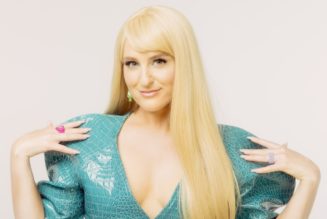
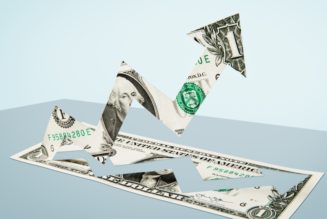
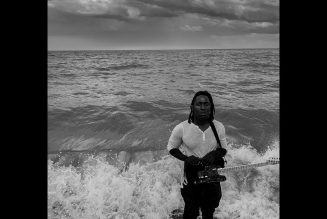
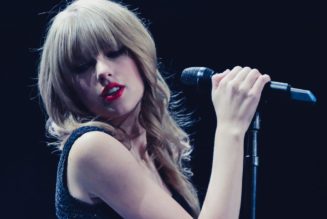
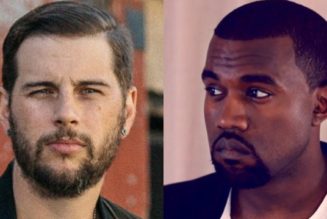

Tagged: Dance, Dolby Atmos, entertainment blog, INTERVIEWS, music, music blog, Music News